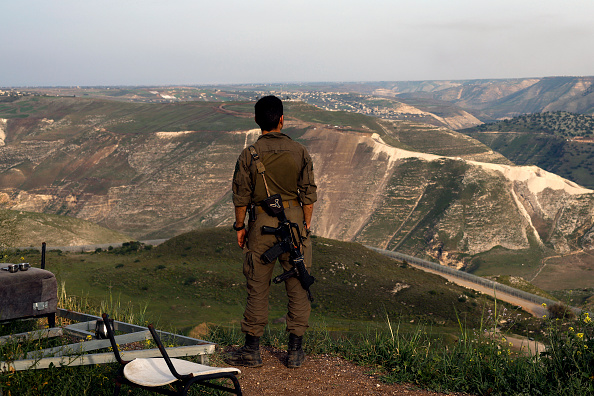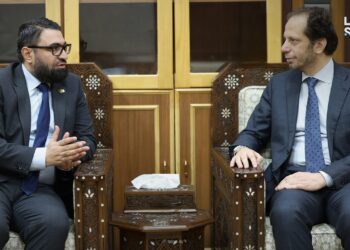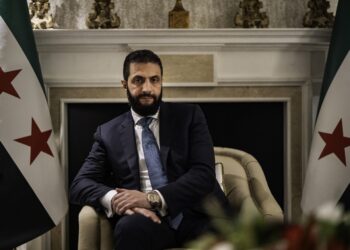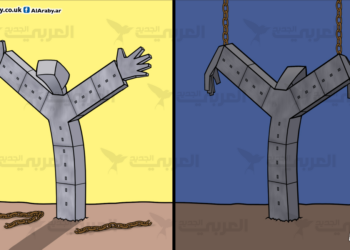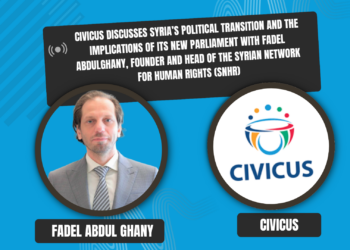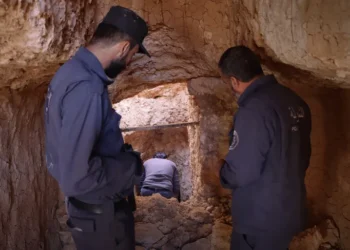Fadel Abdulghany
The fall of Bashar al-Assad’s regime in December 2024 marked a pivotal geopolitical turning point in the Middle East. This sudden shift, unexpected by regional and international powers, ended decades of autocratic rule and relative political stability that had characterized the Syrian regime since Hafez al-Assad came to power in 1970.
This unexpected shift provided Israel with an unprecedented opportunity to reshape the regional landscape in line with its security and political vision. Israel adopted a clearly hostile stance, ignoring Syrian President Ahmad al-Sharaa’s attempts at political openness and moderation. Israeli Prime Minister Benjamin Netanyahu and Defense Minister Israel Katz described al-Sharaa’s government as an “existential threat,” focusing on his jihadist background and refusing to acknowledge his abandonment of his previous ideology. Israel even went so far as to consider his government ideologically aligned with Hamas, in a clear attempt to justify pre-existing expansionist plans.
In the most serious military/political escalation, at dawn on Friday, May 2, Israeli warplanes launched an airstrike targeting a site near the presidential palace in Damascus. Following the attack, a joint statement was issued by Netanyahu and Katz, who considered the raid a direct message to the Syrian regime and affirmed their categorical rejection of what they described as “threats to the Druze community or the dispatch of forces to the south.”
Immediately after the collapse of the Assad regime, Israel’s attention turned to seizing control of the UN-monitored buffer zone. On December 8, 2024, Israeli forces quickly occupied large parts of the demilitarized zone, which extends approximately 75 kilometers in length and ranges in width from 10 kilometers in the center to 200 meters in the far south. For five decades, this area has served as a pivotal security buffer under the supervision of the United Nations Disengagement Observer Force (UNDOF), helping maintain a degree of border stability despite the absence of a formal peace treaty between the two sides.
In a deliberate move reflecting a strategic shift, Israeli Prime Minister Benjamin Netanyahu declared the disengagement agreement no longer valid, considering that previous arrangements had lost their validity in light of the new reality. The Israeli occupation was accompanied by significant restrictions on the UN force’s mission, with the number of its daily patrols reduced from 55-60 to just three-five.
Field reports also revealed that Israeli forces were establishing new military installations and placing sovereign symbols within the buffer zone, in direct violation of the mandate granted to the UN mission. In addition to controlling the buffer zone, Israel has expanded its territorial influence to include:
- The entire Golan Heights, which covers an area of approximately 1,200 square kilometers, has been bolstered by Israel’s continued occupation since 1967.
- Additional areas exceeding 500 square kilometers in southwestern Syria constitute an unprecedented incursion deep into Syria.
Israeli actions on the ground also revealed a clear intention to strengthen a long-term military presence in the newly occupied Syrian territories. Satellite images showed Israel establishing several new military bases, and Israeli Army Radio reports confirmed that nine bases had been established since December 2024, distributed as follows: Two bases on Mount Hermon reinforce Israeli control over the highest geographical points in the region. Seven military bases are located within the buffer zone, reflecting a trend toward permanently consolidating the occupation.
It is noteworthy that these bases are not limited to military infrastructure; they also include residential facilities and a synagogue, indicating a systematic plan aimed at imposing a new demographic and political reality in the occupied territories. Road construction is also underway in these areas, which is interpreted as part of efforts to support military operations and consolidate long-term control.
Coordination with Druze Sheikhs and Differing Positions
Following the fall of the Assad regime, Israel intensified its efforts to communicate with some prominent figures in the Druze community inside Syria, adopting a discourse that portrayed it as a defender of minorities in the face of what it described as potential threats from the new Islamist-leaning Syrian government.
In this context, Israeli Prime Minister Benjamin Netanyahu issued direct instructions to the Israeli military to provide protection to Druze communities, accompanied by clear warnings that Israel would target Syrian forces if they approached specific villages, such as the town of Jaramana. Syrian Druze have historically adopted varying political approaches, adapting to shifts in the balance of power. This pattern was evident in the divergent positions they took toward Israeli intervention after the fall of Assad. Positions ranged from limited engagement and cautious cooperation, on the one hand, to outright rejection, on the other:
- Cautious Engagement: Segments within the Druze community welcomed the Israeli protection, which was locally dubbed the “Druze Iron Dome.” Druze leaders expressed willingness to engage in limited security coordination with Israel, and local military formations were established that sought security guarantees from the Israeli side.
- Popular and Political Rejection: In contrast, broad segments of the Druze community expressed their categorical rejection of any Israeli intervention. Demonstrations took place in the Suwayda Governorate, where banners were raised affirming the unity of Syrian territory and rejecting foreign tutelage. In March 2025, large-scale protests erupted in the town of Jaramana, denouncing Netanyahu’s statements regarding the “protection” of the Druze. Protesters chanted slogans such as, “We are Syrians and do not need foreign protection” and “Syrian unity is a red line,” affirming their commitment to national sovereignty and their rejection of any foreign intervention.
Implications and Impacts
The Israeli occupation constitutes a clear violation of fundamental principles of international law, foremost among which is the prohibition on the acquisition of territory by force, as enshrined in the UN Charter and reaffirmed in Security Council Resolution 242 of 1967. By ignoring the 1974 Disengagement Agreement, which regulated the situation in the buffer zone for five decades, Israel is undermining the legal frameworks governing international relations and paving the way for a dangerous precedent.
The establishment of permanent military bases and infrastructure in occupied Syrian territory confirms Israel’s intention to consolidate a long-term occupation. This expansion would subject large parts of southern Syria to Israeli security control, replicating the occupation model it practiced in southern Lebanon between 1982 and 2000. This military campaign has also significantly weakened Syria’s defensive capabilities.
Reports indicate that between 70% and 80% of Syria’s strategic military assets have been destroyed, including air defense systems, missile capabilities, and conventional military infrastructure. This negatively impacts the Syrian government’s ability to defend its territory or extend its sovereignty, particularly in areas experiencing conflict with foreign-backed factions.
Israel’s coordination with the Druze community and the Syrian Democratic Forces (SDF), following the fall of the Assad regime, poses a direct challenge to the authority of the Syrian state. By presenting itself as a protector of the Druze and establishing direct channels of communication and security coordination with them, Israel seeks to redraw the internal balance of power in Syria beyond the confines of a traditional military confrontation. This coordination allows Israel to build parallel power structures that weaken the central government and threaten the unity of the national state.
Testimonies from residents of Syrian villages under Israeli occupation reveal the devastating effects on their daily lives. In towns such as Jamla and Abdin, residents reported that Israeli patrols burned military vehicles, conducted searches, and imposed demands for disarmament and the registration of local leaders. Residents also reported livestock confiscation, the detention of civilians, and severe restrictions on agricultural activity, particularly in areas close to UNDOF positions, exacerbating the humanitarian situation in the area.
Israeli military operations and forced land seizures have resulted in a new wave of displacement of thousands of Syrians from affected areas, joining the millions of internally displaced persons (IDPs) as a result of the conflict that has been ongoing since 2011. This ongoing displacement places an additional burden on humanitarian resources and public services in areas under Syrian government control, further complicating relief and resettlement efforts.
The Syrian Government’s Responsibility
The new Syrian government bears an urgent national responsibility to strengthen political partnership with the Druze community by adopting a comprehensive vision that ensures its effective representation at all levels of decision-making, from local councils to senior state positions. This also requires granting the Druze community a tangible role in transitional justice processes and the rebuilding of state institutions, while preserving and protecting their cultural and religious identity.
Sufficient development resources must be allocated to Druze-majority areas, which have suffered from marginalization and neglect for many years. Members of the Druze community must also be involved in drafting a new national charter that guarantees the rights of all Syrian components on the basis of equality and citizenship. This participatory approach would strengthen the transitional government’s internal legitimacy and block Israel’s attempts to co-opt certain Druze groups and use them as a tool to tear apart the Syrian social fabric. It would also help thwart the “divide and conquer” policy that Israel seeks to consolidate as a strategic tool to weaken the Syrian state and undermine its sovereignty.
Extensive Diplomatic Engagement
The Syrian transitional government faces an imperative need to confront repeated Israeli attacks through active, multi-level diplomatic engagement. This requires an immediate request for an emergency session of the Security Council following the Israeli attack on the presidential palace, supported by a comprehensive legal file documenting the series of Israeli violations of Syrian sovereignty and the principles of international law.
In parallel, Syria should request an urgent meeting of the Arab League Council at the ministerial level to issue a unified Arab position condemning the aggression and supporting legitimate Syrian rights. Active diplomatic engagement with the European Union, particularly with countries with relatively independent positions, is a priority to secure a European condemnation of the Israeli aggression that goes beyond the usual expressions of concern. This must be accompanied by a systematic media campaign based on accurate documentation of Israeli violations, the activation of alliances with international anti-occupation forces, and recourse to specialized UN organizations such as the International Court of Justice and the Office of the High Commissioner for Human Rights. These efforts aim to strengthen Syrian legitimacy, expose the practices of the Israeli occupation to global public opinion, and mobilize international support to protect Syria’s sovereignty and territorial integrity.
The Responsibility of the International Community
Under international law, the international community bears clear responsibilities in the context of Israeli attacks on Syria, including ensuring respect for Syria’s sovereignty and territorial integrity and providing protection for civilians affected by the conflict. The United Nations must reconsider its oversight role by reforming UNDOF or establishing a new mission with an expanded mandate, in addition to developing an independent humanitarian mechanism that ensures unhindered access to aid. It also highlights the need to request an advisory opinion from the International Court of Justice on the legal status of the occupied Syrian Golan, as a step toward clarifying Israel’s international obligations.
For its part, the United States bears a dual responsibility as a key ally of Israel and a permanent member of the Security Council. Its military assistance to Israel must be conditional on respect for international law, including refraining from any settlement activities or violations of Syrian sovereignty. It is also expected to support diplomatic engagement with the transitional Syrian government and work to formulate a balanced regional security framework.
The European Union is expected to strengthen the diplomatic track by hosting informal dialogues between experts from both sides, along with political and economic pressure to ensure Israel’s compliance with international law. In the regional context, Turkey has a responsibility to leverage its relations with both sides to ease tensions, while Arab countries are expected to play a supportive role in restoring Syria’s sovereignty—politically, economically, and perhaps militarily in later stages.
Conclusion
The Israeli-Syrian conflict in the post-Assad era poses an exceptional challenge to the new Syrian administration, intersecting geopolitical dimensions, international legal norms, and complex humanitarian repercussions. Although the most likely scenario in the foreseeable future is the continuation of the Israeli occupation of Syrian territory while entrenching a “frozen conflict,” diplomatic opportunities still exist—particularly through serious negotiations, the revival of international oversight mechanisms, and the adoption of gradual approaches to restoring sovereignty and stability in Syria.
Effective international engagement requires a delicate balance between respecting Syrian sovereignty, promoting compliance with international law, and recognizing the structural and factual complexities of the conflict. In this context, understanding Ahmad al-Sharaa’s transformation—from military commander to head of state—is pivotal to shaping the future of Syrian-Israeli relations. The risks of this conflict extend beyond its bilateral scope, threatening regional stability, international legal legitimacy, and the fate of millions of Syrians exhausted by years of war.
Although it is difficult to reach a comprehensive settlement given the current balance of power, the extreme right-wing Israeli government, and the ongoing massacres in the Gaza Strip for nearly two years, gradual progress on the humanitarian and security issues may prevent further deterioration and pave the way for a more sustainable solution.
The international community must seriously address ongoing Israeli violations and guarantee Syria’s legitimate right to sovereignty and territorial integrity. Diplomatic trends and international policies over the coming months and years will determine whether the Middle East is headed for broader regional chaos or the emergence of a new balance that consolidates long-term stability.
